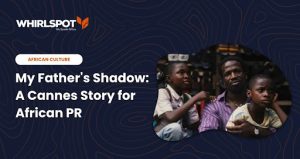Most African press releases succeed or fail in the first ten seconds a business editor sees them.
It’s 9:47 AM in a Lagos newsroom, and the editor’s inbox is stacked with 73 press releases.
The first promises a “revolutionary fintech solution disrupting payments across Sub-Saharan Africa.”
The second vows to “transform digital banking for the unbanked masses.” By the fifteenth nearly identical pitch, she’s hitting delete without even opening.
If you’re a CMO, PR lead, or market expansion manager, this is the hard truth: most African press releases fail – not merely because the product is weak, but because the story is irrelevant, tone-deaf, or poorly timed.
And when that happens, you don’t just lose a media mention; you lose credibility, relationships, and millions in earned media value you can’t buy back with ads.
What Is a Press Release in the African Context?
A press release in African markets is a culturally fluent communication tool that bridges the gap between international business objectives and local media expectations.
The point is that it is not just a translated version of a global template.
In Western markets, press releases fight for space in an endless flood of announcements. In African newsrooms, the challenge feels different: editors are sifting through a mix of genuine market moves and thinly disguised vanity projects.
The experienced ones can spot the difference in seconds, and they can tell when a company sees “Africa” as one big market instead of recognising that Nigeria’s tech-driven urban hubs run on a different beat than Kenya’s agriculture-heavy rural regions.
The best African press releases function as both news announcements and educational resources, helping journalists understand not just what you’re doing, but why it matters to their specific audience.
Global Format, Local Irrelevance
If your African press release still sounds like a global boardroom memo, don’t be surprised when it lands in the trash.
This is where a lot of international brands lose African journalists in the first paragraph.
They take their shiny, globally approved press release, swap “North American markets” for “African markets,” drop in a line about “serving underserved populations,” and call it localisation.
The problem usually isn’t the format – it’s the relevance. In a Lagos newsroom, a promise to “disrupt” or “transform” means nothing unless it’s tied to something concrete and local. Editors want to see how your solution tackles a challenge they cover week in, week out.
Consider the difference:
Generic: “TechCorp announces expansion into African markets with innovative mobile payment solutions designed to serve the unbanked.”
Locally Relevant: “TechCorp partners with Lagos-based Venture Bank to address Nigeria’s ₦2.4 trillion cash economy challenge, targeting the 34% of adults who remain outside formal banking.”
Guess which one got journalists calling back
The second version speaks the market’s language; it names a credible local partner, uses specific data, and tackles a real, measurable problem. Those are the elements that make African press releases get picked up.
Read Also: The Future of Digital Marketing in Africa
Headlines That Get Clicked in African Media
If your headline doesn’t grab attention instantly, your press release is already in the recycle bin. Journalists in African markets skim through dozens, sometimes hundreds, of releases a day. Most get deleted without a second glance.
The headlines that survive tend to be specific, local, and promise tangible value.
Examples:
Weak: “Global Retailer Expands to Africa”
Strong: “Kenyan Farmers Gain Direct Market Access as AgroLink Opens Nairobi Distribution Hub”
Weak: “New App Launches in Nigeria”
Strong: “Lagos Commuters Cut Travel Planning Time by 40% with TrafficSense Integration”
The strong headlines speak directly to a local audience, name a place they recognize, and deliver a concrete benefit.
Forget buzzwords like “game-changing” or “revolutionary.” They don’t mean much to a time-pressed editor. What works is something that makes them think, “My readers will care about this.”
Local relevance plus measurable impact. That’s your formula for getting opened instead of deleted.
Why Local Voices Win More Media Coverage
One of the fastest ways to sink a press release in Africa is to make it sound like it was written in a corporate boardroom thousands of miles away. When every quote comes from executives in London or New York, it signals that the story has no real local roots.
Local voices change everything. Quotes from a country manager, a respected local partner, or a real customer instantly add credibility and make journalists more likely to care. They show you’re not just “entering a market”, you’re indeed, already part of it.
In fact, media monitoring across several African markets has shown the difference this can make. Press releases that feature quotes from local figures consistently earn more coverage than those with only headquarters voices. Journalists trust local perspectives because their audiences do.
When you bring those voices to the table, you’re offering something far more compelling than a product pitch – you’re offering a trusted, relatable point of view that speaks directly to the market.
Timing Can Kill Great Content
In PR, timing is rarely a universal formula. And in African markets, newsroom rhythms often follow patterns that differ from the Western “Tuesday at 10 AM” playbook.
While not hard rules, here are some tendencies worth noting:
- Nigeria: Business coverage often follows weekly editorial cycles. Mondays are prime for pitching stories that set the week’s agenda, while mid-week (especially Wednesday afternoons) works well for updates that need quick turnaround.
- Kenya: Agricultural or rural economy announcements tend to perform better when aligned with planting or harvest seasons. Tech stories can gain traction after major local tech events, when industry coverage is already in focus.
- South Africa: The final week of a financial quarter is dominated by earnings coverage, so other business announcements may get overshadowed.
- Ghana: Energy and mining stories often land best when linked to government policy updates or shifts in commodity prices.
- Egypt: Business news tends to ride the wave of government economic announcements and regional trade developments.
- Morocco: Stories with ties to European markets or Francophone Africa often enjoy stronger pickup.
The key takeaway is that instead of adopting global “best times to send a press release” lists, you can map your story to the rhythms of your target market, both the media calendar and the real-world events that shape public attention.

Types of Press Releases That Perform in African Media
Understanding what type of press release you’re sending can make or break your pickup rate. Different announcement types require different structures, angles, and lead elements.
In African PR landscapes, the most commonly effective press release types include:
- Product Launches: Highlight how the product solves a specific local problem.
- Company Milestones: Frame them in terms of local economic or community impact, not just internal achievement.
- Event Announcements: Tie them to industry trends or local relevance, like “First Renewable Energy Expo in Ghana” beats “Company X Hosts Expo.”
- Crisis Communication: Offer transparency and local detail – who’s affected, what’s being done, and local leadership quotes.
- Mergers & Acquisitions: Show market impact – jobs, investment, access, or product range changes.
- Corporate Social Responsibility (CSR): Link CSR efforts to measurable local benefit, not generic philanthropy.
- Political or Policy-Linked News: Ensure you understand the media sensitivity and political dynamics before releasing.
Knowing your type allows you to optimize angle, format, and distribution list. So, you’re not sending a CSR release to a tech reporter or a product launch to an agriculture desk.
The “One Size Fits No One” Principle
Clearly, what resonates in Lagos might be irrelevant in Johannesburg. African markets are incredibly diverse, culturally, economically, and in media behaviour.
The best campaigns localise not just language, but story framing:
- Nigeria: Talk scale – big population, bigger diaspora, and the speed at which trends explode here.
- Kenya: If you’re not speaking M-Pesa, you’re not speaking Kenyan commerce. Show the rural wins as much as the Nairobi vibes.
- South Africa: Prove you’ve done your homework on regulation and Broad-Based Black Economic Empowerment (B-BBEE). If you skip that, you’re done before you start.
Many brands push out a single “African” press release and wonder why it vanishes into the noise. Break that same news into market-specific versions, with local stats, relevant partners, and culturally tuned angles, and journalists suddenly see why it matters to their readers.
If It’s Text-Only, It’s Dead
In African media, visuals are your ticket to getting notice. Many newsrooms simply don’t have the time or budget to source great photography. If you can hand them strong, locally relevant images or clips, you make their job easier and your story more likely to run, and run well.
What actually helps your pitch:
- A high-res shot of your team at a new facility in Nairobi, not a stock photo from Europe.
- An infographic showing market data in a way that’s quick to grasp.
- A short, 30-second video of a customer using your product.
- A simple chart that helps explain a complex issue.
In plenty of African markets, the stories that make front-page or lead slots almost always arrive with visuals, for example (drone shots of the new site, real local faces, or a 30-second clip that makes the editor see the impact).
Don’t Just Announce. Contextualise.
Journalists want meaning, not just news. This means your press release should answer:
- Why is this relevant now?
- What local problem does it solve?
- How does it fit into current market trends?
For example, a logistics company launching in Nigeria mustn’t just say “new warehouse.” They can tie it to e-commerce growth stats, Lagos traffic challenges, and local partnerships with delivery riders. That story had depth, and depth gets picked up.
Measuring Success Beyond Pickup
“Got published” isn’t the only measure of PR success. Sophisticated African PR teams track:
- Publication quality (national vs. local, trade vs. general).
- Geographic fit (is it your target market?).
- Audience relevance (does the outlet reach your buyer?).
- Follow-up journalist interest (interviews, data requests).
Tracking these metrics reveals which stories drive real engagement and which are just vanity mentions.
C-Suite Checklist: African Press Release Readiness
Before you hit send, can you say “yes” to these?
Local Relevance
- Headline leads with audience impact, not brand bragging.
- Local stats and market-specific context are included.
Cultural Fluency
- Quotes from local people, not just HQ executives.
- A language fits the local tone, avoiding stereotypes.
Strategic Timing
- Release fits local media cycles and relevant events.
Media Relationships
- Journalists you’re pitching to cover your industry and market.
- You’ve provided a local contact for follow-up.
Strong Visuals
- Local imagery and infographics included.
- Formats are press-ready (JPEG/PNG for images, MP4 for videos).
The African media is not impressed by empty hype. Come with real insight, respect for the market, and a story worth telling, and you won’t just get coverage; you’ll be on the shortlist the next time they need a trusted voice.
Conclusion: Turning Strategy Into Headlines
Writing for African markets isn’t a checklist exercise. It’s knowing exactly what will make a local journalist pause mid-scroll. If your hook is bland, your quotes could fit any market, or you’ve picked the wrong moment.
The brands that stand out are the ones that get specific with pitching their announcements to local context, speaking through trusted voices, and landing stories in the formats editors actually want. That’s where most global teams fall short.
Also, big budgets won’t save you if your hook is weak, your quotes are all from HQ, or your headline could be about any market on Earth.
The brands that dominate African coverage are the ones that:
- Spell out the local problem you’re fixing, and make it one people actually care about.
- Let credible local voices say it, not just your global execs.
- Drop the story when the market’s already listening, not when you feel like it.
At Whirlspot Media, we don’t just write African press releases, we make sure a business editor sees it and thinks, “My audience needs this story today.”
We know who opens what, when and why, from Lagos financial desks, Addis Ababa policy reporters to Nairobi tech beats, we know who opens what, when, and why.
If your global press release is about to hit African inboxes, now imagine: a crowded newsroom, a split-second scan, then delete.






